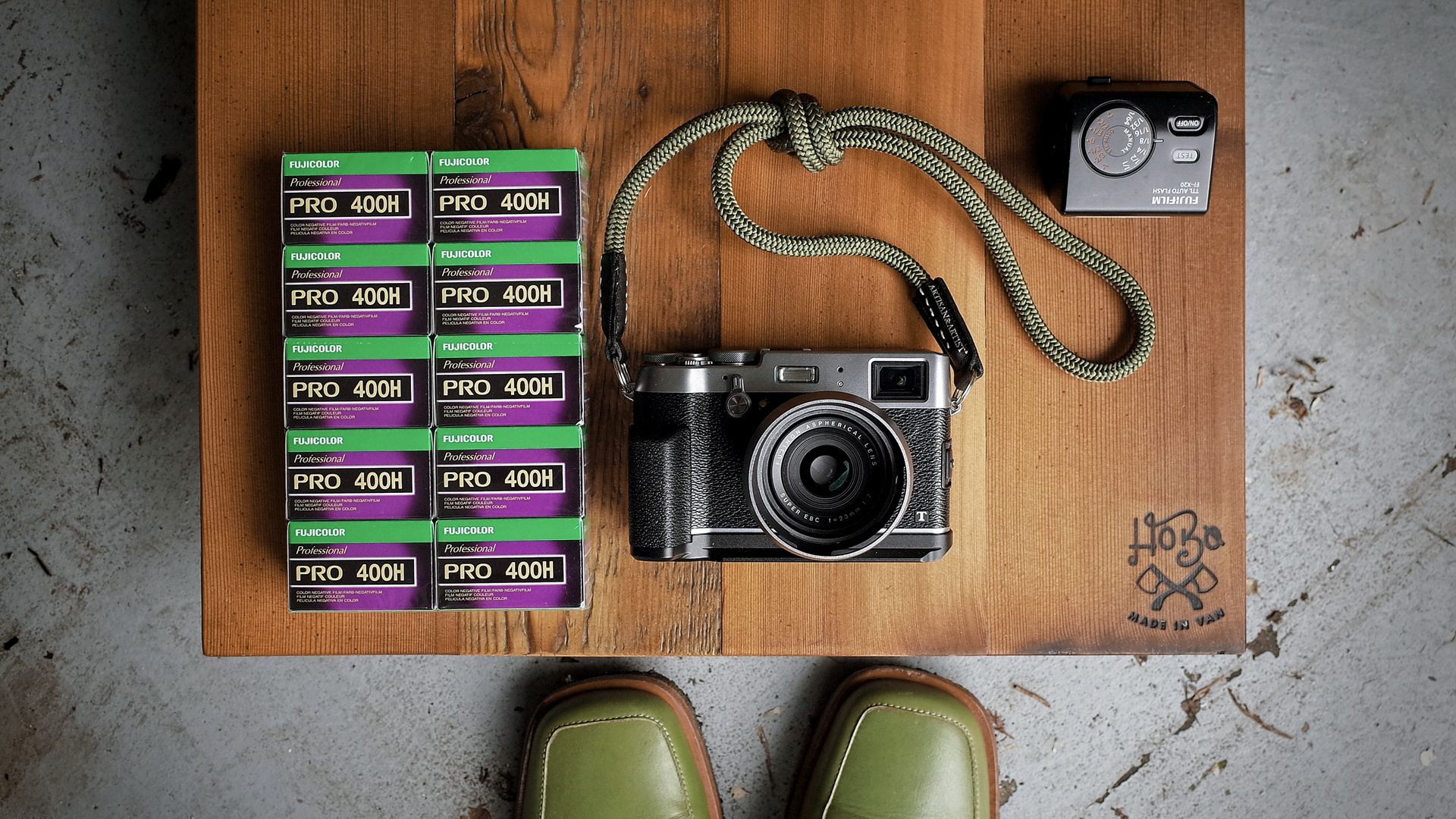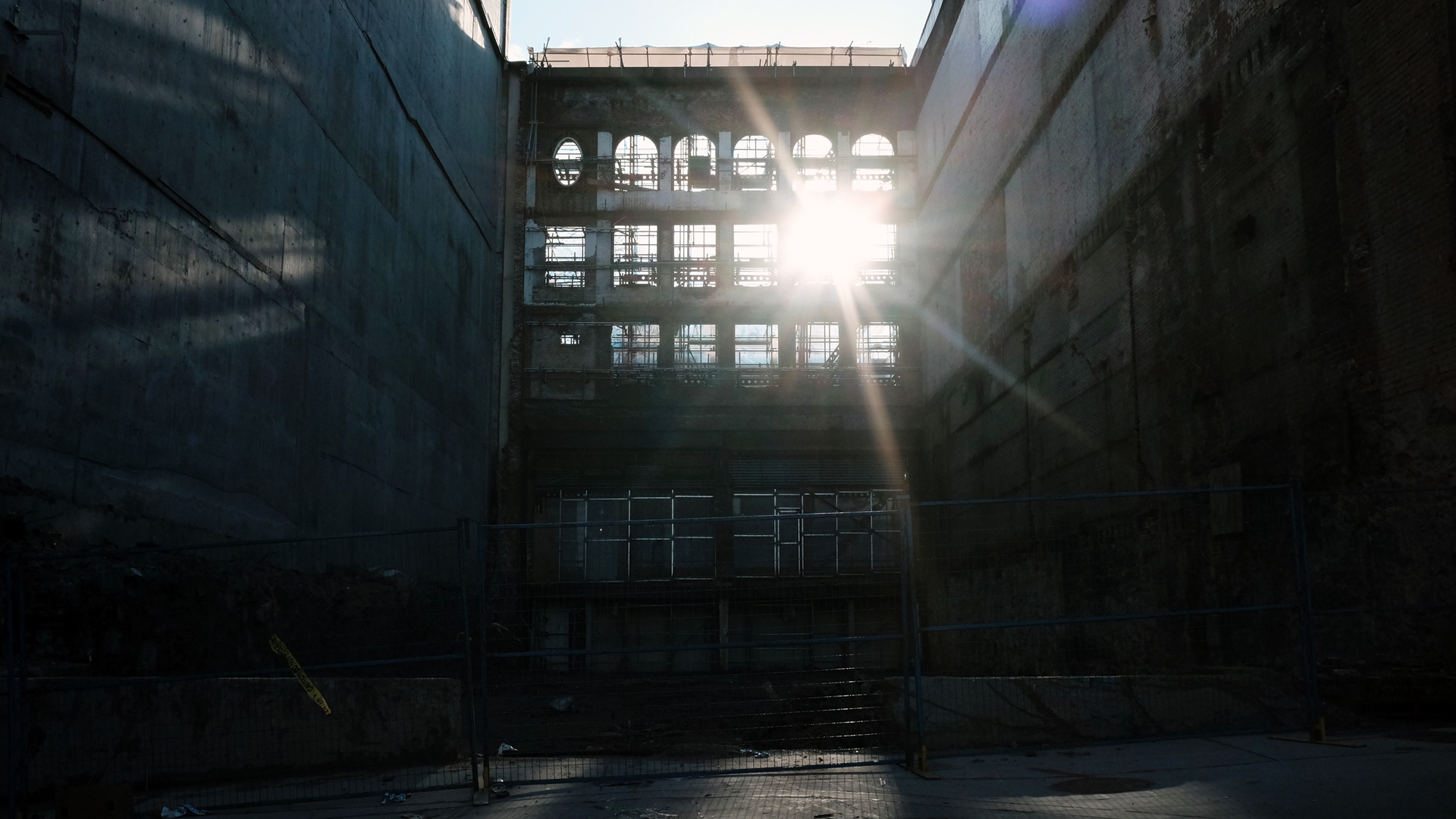As a camera reviewer, I’m rarely tempted to buy a camera. If I like something, I request a review copy, use it for a few weeks and then send it back. My GAS (Gear Acquisition Syndrome) pressure is released. This has been the case for the past few years for me. The two camera brands I’m currently reviewing for is Leica and Fujifilm, so I’m pretty satisfied with the equipment I have access to.
Back in 2013 when I decided to upgrade my EDC (Every Day Carry) camera, I auditioned the Fujifilm X100S and the Ricoh GR. I loved both for different reasons, but in the end the GR fulfilled my requirements of an EDC better than the X100S… but I never forgot how enjoyable it was to shoot with the Fuji. When the new X100T came out in the fall of 2014, my desire to hold it and look at it and shoot
with it again was rekindled. I got GAS again. Fujifilm Canada gave me an extended loan as I was going to take the X100T with me to Hong Kong for a month. I had a great time shooting with it and 7 months later I still have it (but that’s another story).
My conclusion? The longer I have the X100T and the more I review other cameras, I have come to the opinion that the X100T is the best overall digital camera on the market today. I know this is a bold statement, but as a reviewer you have to be strong about your viewpoint, but you also need to back it up with proof. For the price, it’s size, the resolution, the unique features, and X-factor (which includes styling), the X100T is the best overall digital camera on the market today. Here is my top reason why the Fujifilm X100T is the best overall digital camera… the balance of form and function.
I challenge the idea that form follows function when it comes to camera design. I argue that form and function must be equally balanced. Does how a camera looks matter if all you want to do is take pictures? Yes it does. Why? Because nobody wants to shoot with an ugly camera, as superficial as that may sound. At the same time, nobody wants to shoot with a non-ergonomic camera either, so both must be balanced. I would argue that a DSLR is more function than form (70/30), while a camera like the Leica M240 is less function and more form (30/70). The Fujifilm X100T is the perfect balance of form and function (50/50). It’s as beautiful to look at as the original M3, but shoots intuitively (shooting without looking for buttons) like a DSLR. It is this ‘functional-retro’ balance that has made the X100 series a success. Imagine if the X100 looked like the original Sony NEX or early Samsung NX series cameras? The X100 would have failed.
Let’s be honest, we were all attracted to the original X series camera because of the way it looked. The hipsters liked it because it looked retro and us older film shooters gravitated towards it because it felt and shot like an old rangefinder. This isn’t a bad thing. How many professional athletes choose a particular brand of bat or a hockey stick or a running shoe based initially on aesthetics? How many artists choose a particular paint brush or pencil based on how it feels makes them feel? Emotional attachment based on aesthetic and tactile qualities can induce creativity. For a creative pursuit (like photography), this is a good thing.
Yes I am suggesting the main reason why the X100T is so popular is because of the way the camera looks and feels. And yes, it also takes great pictures. I’m not going to talk about the advantages of X-trans technology, the APS-C format or Fujifilm’s fantastic jpegs. These are all good and true points. I’m going to argue that functional retro styling and the amazing hybrid viewfinder is what makes the X100 series stand out. Without these two features, the X100 series would be competent but just another camera lost in the sameness that has invaded the camera design landscape. When the X100 first came out, there was nothing really like it on the market.
So as other manufacturers fight over megapixels, sensor size, AF speed and focus points, Fujifilm continues to focus on innovation in design and functionality. I’m not saying Fujifilm doesn’t care about technology, but it’s not what makes their cameras successful. Listening to the needs of their customers, continuous firmware updates, slight upgrades to the existing design, and an awareness of the needs and wants of their customers (old school design with new school innovation), Fujifilm has branded themselves a consistent and loyal following. However, if Fujifilm isn’t using specs (only) to attract customers, how will they continue to make and sell more cameras in the future? This is something I was thinking about while playing with the X100T. How many more letters can they add to the end of X100 before they have to create the X200, and if they do, what ‘leap’ in innovation must occur to allow for the generational jump?
In terms of technology, Fujifilm and Panasonic have been working on an organic sensor since 2013 that will give full-frame performance from the APS-C sensor, allowing for much lower noise and higher dynamic range than current CMOS based sensors. I know for a fact this is what is stalling the release of the X-Pro 2, and I can definitely see the X200 coming in the fall of 2016 with this sensor installed. But this is just technology.
What else can Fujifilm do to improve on the X100 series? Here are my top 5 future X100/200 cameras Fujifilm should-could create:
- Fujifilm X100WR: self explanatory. You have the technology Fuji. Just do it.
- Fujifilm X100T50: 35mm f/2 (approx 50mm equiv) model. Forget the TCL-X100. It’s too big and bulky and blocks the OVF. For street photography, the 50mm equiv focal length is probably the most popular and should be a staple variant of the X100 series.
- Fujifilm X100G: G is for Green. Yes I know it’s a blatant rip-off of the recently announced Leica M-P Safari, but Fujifilm needs to come out with more special edition colours other than silver vs black. I suggest green because its my favourite colour. Create a kit with a matching leather strap, case, lens hood, etc. No this isn’t a technological or functional advancement, but imagine if cars only came in 2 colours? How boring would that be? This isn’t 1908!! More cosmetic special editions with kit accessories please.
- Fujifilm X100Zi: 23-35mm (35-50mm equiv) zoom lens. Like the GA645Zi was to the original GA645 medium format film camera, this will have a slower lens (f/3.5) and will be slightly bigger than the X100, but will allow a bit more versatility for those who do not want to add converters to get different focal lengths. X100 Zoom Zoom!
- X100MZ (Magnification Zoom): the ability to manually zoom the magnification of the viewfinder, so you can decide how much you want to see outside the frame lines. Some want the frame lines as close to the edge as possible for maximum magnification. Others want to see more outside the frame, being able to see objects way before they enter into the image. What if you have the ability to chose? This mode should be available in both OVF and EVF mode. I would recommend the ability to manually adjust magnification from for 50mm full-frame lines to 24mm full-frame lines. However, if you shoot 50mm but want to see more outside the frame, then zoom out wider, and the camera will compensate your 50mm frame lines while zooming out the magnification. I would want a digital version of this too, as many street photographers want to be able to see outside the frame lines. I know this EVF option to change magnification would mean to lower the resolution of the image, but for certain styles of photography, I think it’s worth losing some resolution to gain an outside-the-frameline-perspective (the Ricoh GR has 35mm and 47mm digital zoom which I use often, but it doesn’t show outside the frame lines which is what I really want).
So these are my top 5 future X100 series models I would love to see, most of which would be possible to create today, right now. How about accessories? When I spoke with Fujifilm Canada president Ryuichi Matoba and vice-president Greg Poole recently in Vancouver, I told them that Fujifilm needs to focus more on accessories, since many of us end up going to third party manufacturers to get what we really want. So here are my top 5 accessories that Fujifilm should make or improve on:
- Super-wide converter, either 14mm or 16mm. The current WCL-X100’s 18mm is not wide enough to be called ‘wide’. Also instead of making it big and bulky to maintain the f/2 aperture, most won’t mind f/2.8 or f/3.5 if it can be made significantly smaller.
- Release buttons please. Take advantage of the threaded shutter button. Make different colours, materials, textures (soft touch, wood, graphite, etc.). I would have 3 or 4 different ones and change them depending on my mood.
- Proper half-case in different materials and colours. Most aren’t into full cases anymore because they get in the way, especially for non P&S cameras. Start with basic black with the ability to access the battery and memory card compartment and a tripod socket.
- Upgrade the EF-X20 flash to allow the camera to turn the flash on and off, and perhaps make it slightly bigger so it can use AA instead of AAA batteries. Or how about an LED flash which can also double as a video light? My iPhone has a more versatile flash than most digital camera flashes.
- Better straps please. I’d rather have no strap than a bad one that the manufacturer feels obligated to make and include in the kit. The leather strap on the X-T1 is not bad, but it’s not great either. Work with Artisan & Artist or Cub & Co and come out with some innovative strap systems. Leather, silk, rubber (great for WR bodies), different colours and lengths.
I know there are even more accessory ideas out there, but I think these are the basics. I even recommended to Fujifilm that every country should have their own separate website where they can sell these accessories and consumables (like the INSTAX film) and they could even sell other authorized accessories from major accessory brands to make the website financially viable (sort of like Apple’s online store). Imagine having a club card or point system where you earn points as credit towards accessories? It’s better than offering rebates or discounts isn’t it? Reward your loyal customers.
Moreover, the future of the enthusiast camera market should look to the X100T as an example. Be different. Be innovative. Create an emotional attachment to the camera and not just a gadget with a list of specs. DSLRs will always be around as a workhorse camera for working photographers. The low end P&S camera market is a joke and will eventually disappear (like 1 hour photo labs did) as smartphone cameras take over. The growing trend is the advanced compact all-in-one cameras (Sony RX series, Panasonic LX series, Ricoh GR series, etc.) and mirrorless ILCs. Of all these cameras, the X100T is the best example of balancing form and function, retro and innovation.
Yes, Fujifilm and their X series cameras are shining examples of a brand maintaining the principles and styling cues of film cameras (similar to Leica), while balancing enough advancement in technology and innovation in an ever changing technological battlefield to remain significant (and unique) amongst its peers.



























